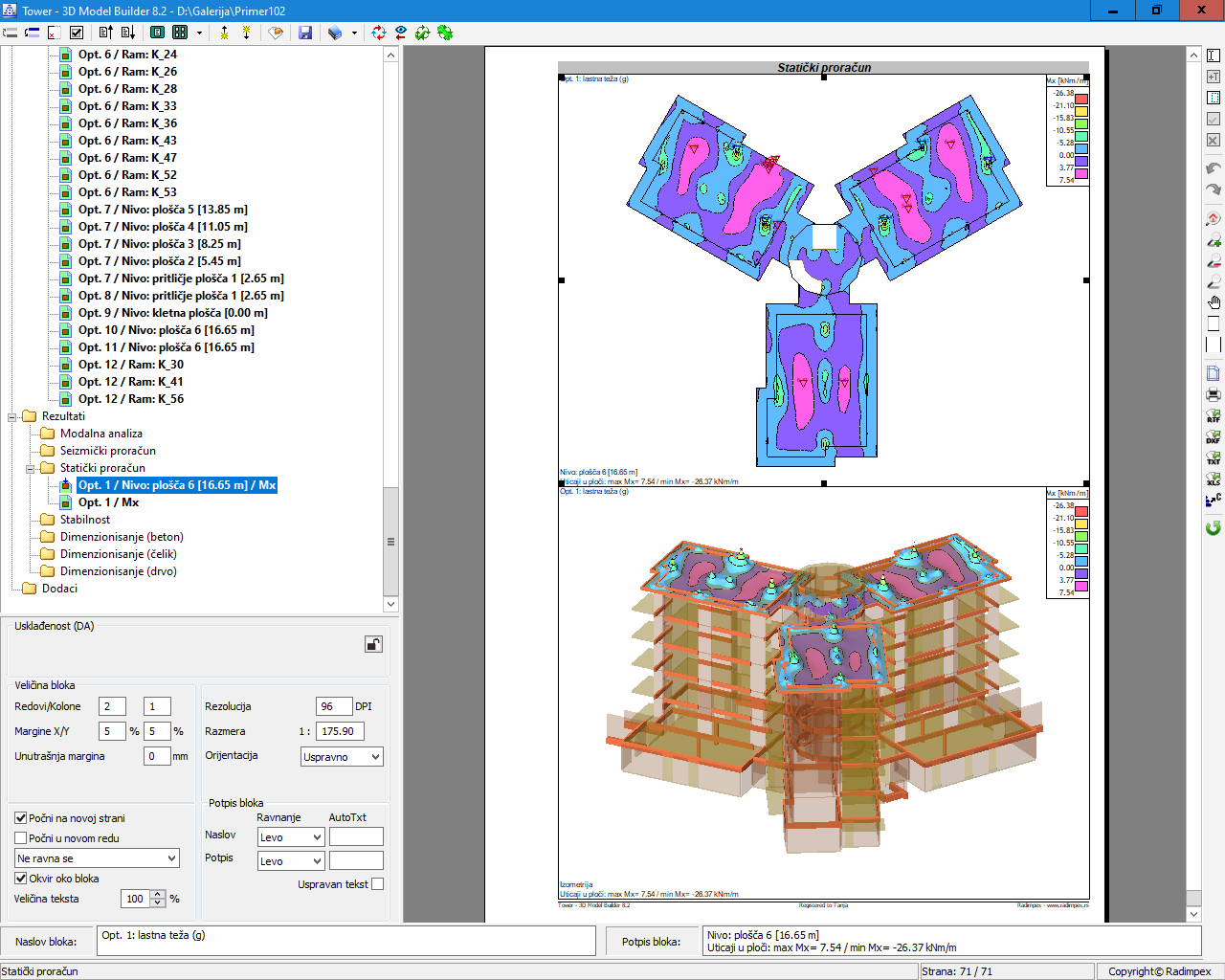Tower
About
About program Tower
Tower is software for static and dynamic structural analysis, concrete, steel and timber design. It is specialized for universal analysis of influences in planar and space structures. By providing strong tools that are automated, integrated, all-inclusive and intuitive, this program enables the engineers to increase the speed and quality of designing. Version 8 is a high performance professional tool, based on experience lasting many years and on the latest knowledge and realization of the expert team, engineers and first-class programmers.
Basic capabilities
• Analysis of static influences in accordance with first order and second order theories
• Calculating the natural values (forms and oscillating periods of the structure)
• Generating the seismic load in accordance with various standards (JUS, EC8, SNIP, ...)
• Generating automatically the mesh of finite elements
• Generating automatically the masses in all nodes on the model
• Beams and columns with variable cross sections (haunched beams, prismatic columns, laminated wood girders, etc.)
• Modeling the rigid connections in beam nodes (offset beam - diagrams in clear spans)
• Analysis of influences in prestressed structural members (arbitrary cable geometry and calculating the prestressing force loss)
• Assigning the completely arbitrary character and direction of load action
• Automatic dimensioning of reinforced concrete (JUS, EUROCODE, SNIP, ACI, DIN, BS, SIA, etc.) structures.
• Automatic dimensioning of steel structures (JUS, EUROCODE, SIA).
• Automatic dimensioning of timber structures (JUS, EUROCODE).
• Creating easily the high quality design documentation with vignette, textual reports and graphic blocks
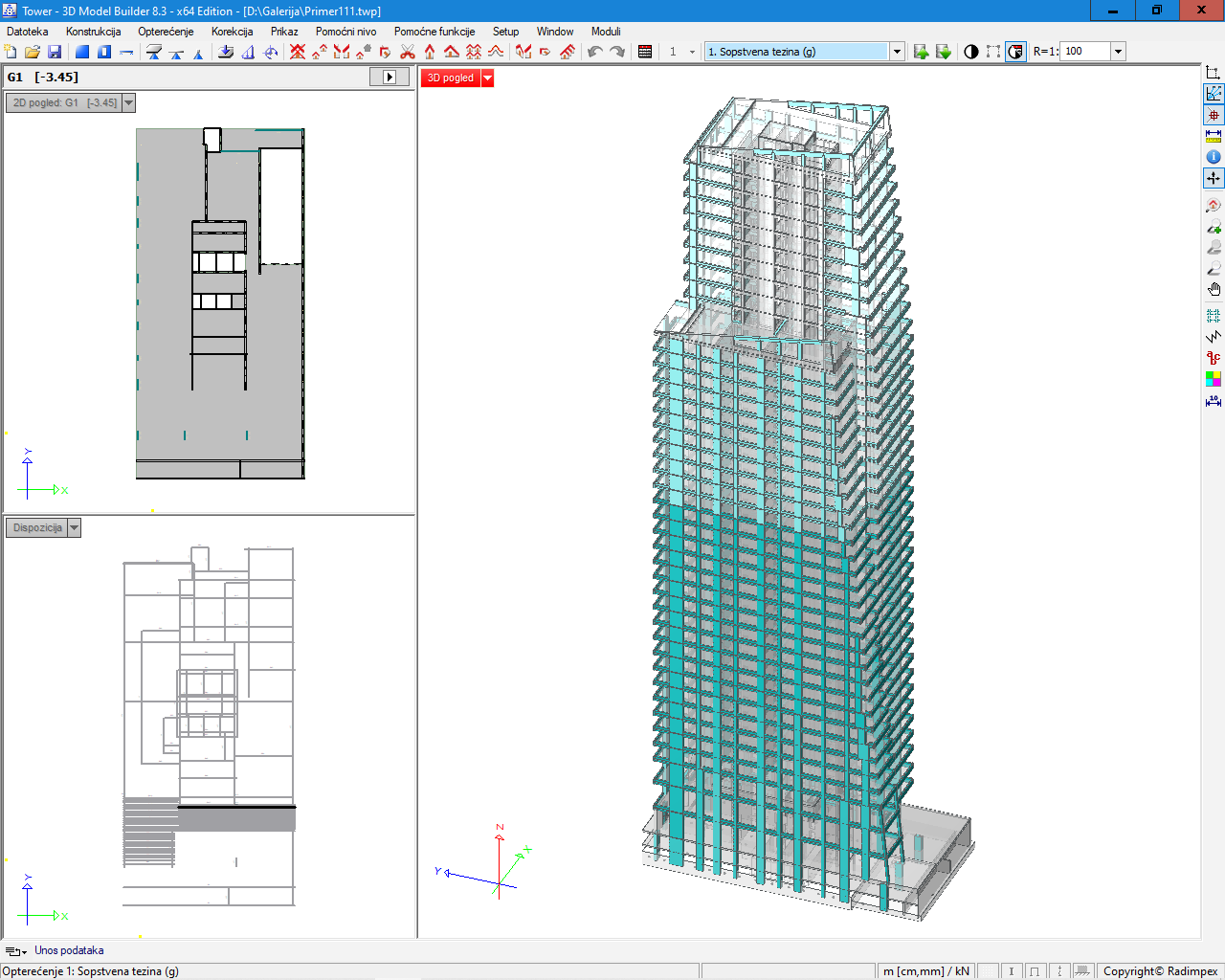
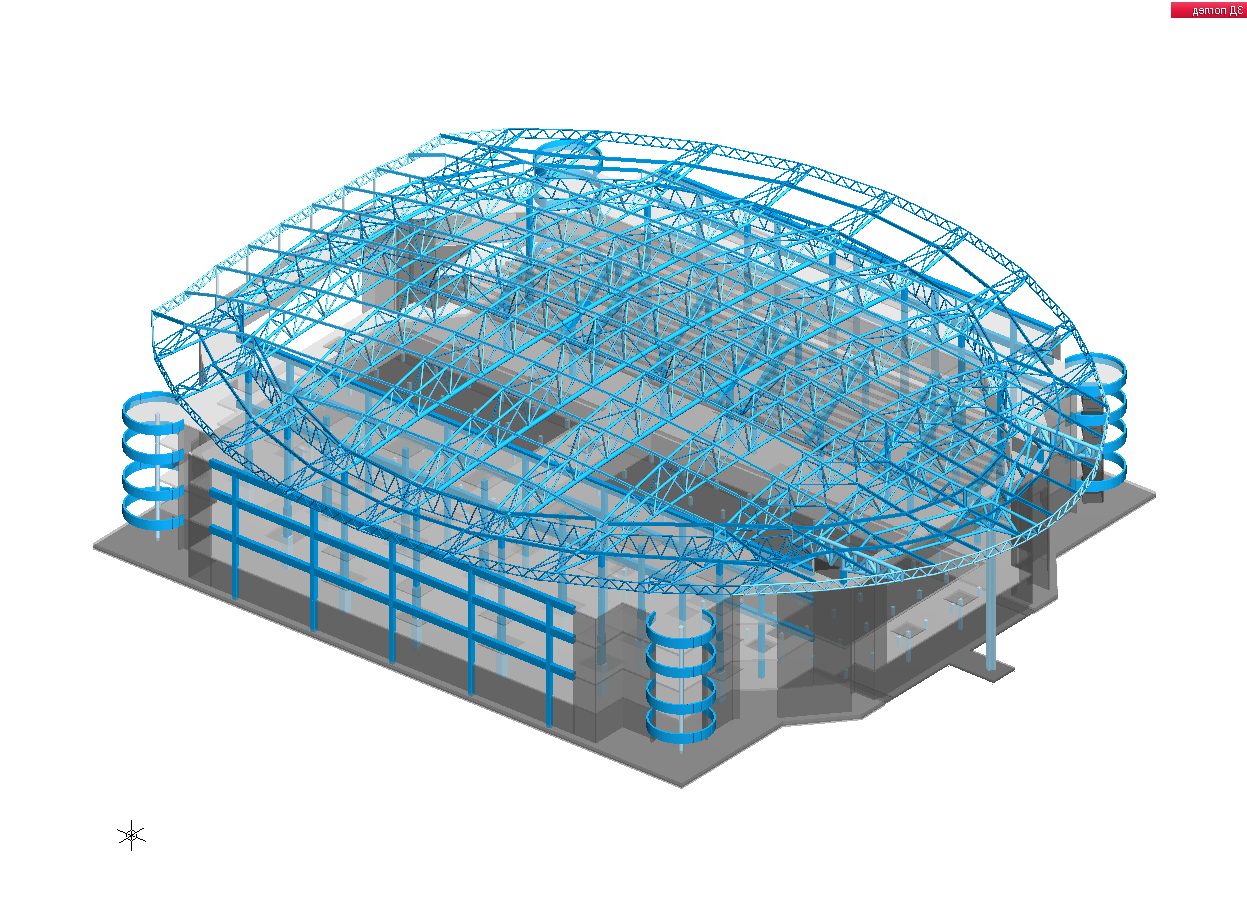
Advanced features
• Calculating the structural stability (determining the critical forces and buckling lengths)
• Modeling the prefabricated floor structures by orthotropic plates
• Analysis of influences throughout defined stages of building construction (prefabricated structures, composite structures, etc.)
• Calculating due to temperature influences and support displacement
• Eccentric positioning of beams and columns (true modeling of girders in plates, columns with abrupt change of cross section, etc.)
• Foundations on elastic ground and feature for modeling a soil as a elastic halfspace defined by layers with different properties.
• Analysis of influences due to live load (defining the completely arbitrary pattern and path of live load)
• Generating automatically the load on rotationally symmetric parts of the model due to various natural phenomena: self-weight, snow, pressure, water, earth, wind
• Automated update of project documentation after post changes in the model.
Graphical editor
• Defining the arbitrary planes for drawing
• Simultaneous use of planar and space drawing
• Selecting precisely the points in the drawing (dynamic osnap with combined criteria)
• Dynamic zoom and pan. Dynamic rotation of isometric presentation of the model (orbit)
• Manipulating the elements in the drawing (copying, mirror copying, deleting, rotating, complete undo/redo system of restoring the drawings, etc.)
• Generating automatically the vertical elements of the structure
• Generating automatically the rotational symmetric bodies (sphere, cone, vault, helix)
• Operating with blocks of drawings (saving and entering the arbitrarily selected parts of the model)
• Grouping the arbitrarily selected parts of the model into wholes and deleting the visibility to other parts of the model (only columns, walls, typical floor structures, web members, main girders, etc. visible)
• Visualization of the model (DirectX render, walking through building with camera)
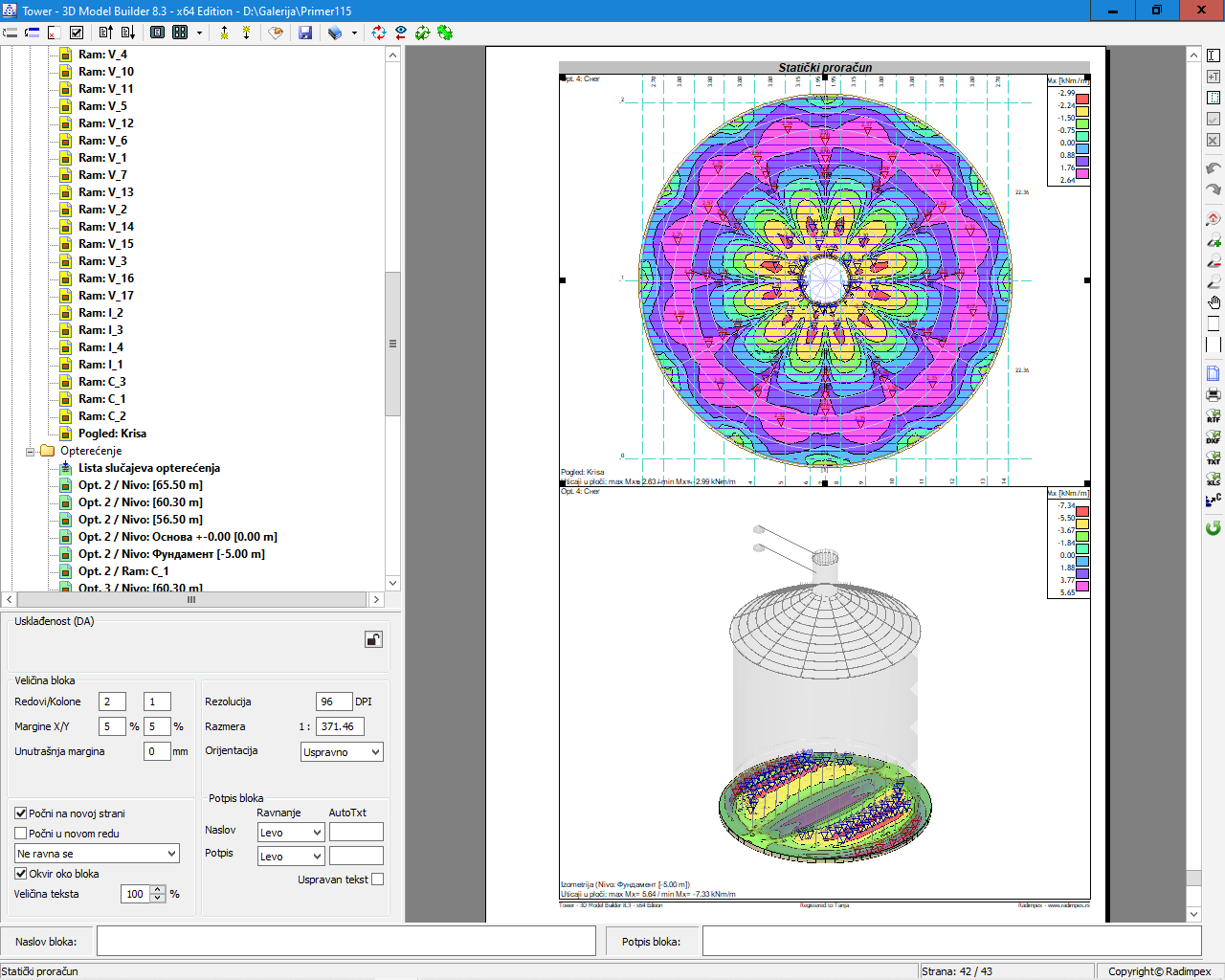
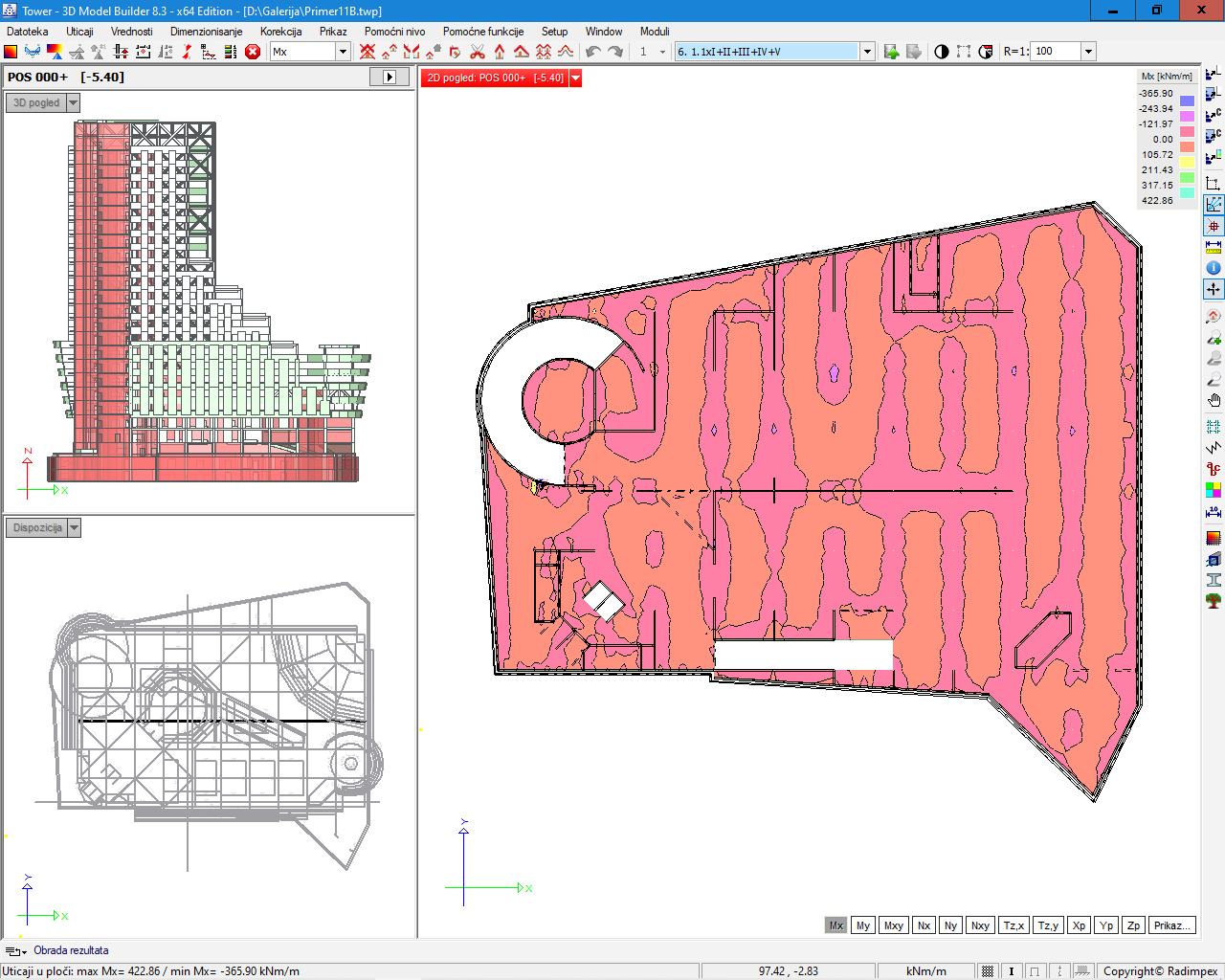
Results elaboration
• Quick retrieveing the extreme values of influences in the whole model or only in a certain group of elements (extreme values of axial forces in columns only, etc.) maximal bending moments in plates in typical floor, maximal displacements of walls only, etc.)
• Presentation of results, both in the entire space model and in its certain parts (in selected frame, wall, floor structure, foundations, arbitrarily selected view, etc.)
• Presentation of results in surface elements by isolines and diagrams along an arbitrarily assigned intersection line
• Presentation of influences in linear elements by diagrams and color gradientsPresentation of support reactions with direction and intensity
• Diagrams of stress distribution in composite cross-sections through defined stages of constructing
• Influences in individual parts of composite cross section
• Simultaneous presentation of influences in all columns and walls in one level (insight into distribution of influences due to seismic action on all columns and walls in one floor, redistribution of axial forces due to vertical load onto columns and walls of a given level, etc.)
• Presentation and animation of oscillating forms and deformed model
• Adopting reinforcement in reinforced concrete structures with automatic creating of reinforcement details and export to our program "ArmCAD 2005" and "ArmCAD 6" .
Three configurations
Lite
It is intended for static analysis and dimensioning of simple constructions which include in-plane girders of arbitrary complexity (lattice beams, ceilings and foundation slabs) and smaller constructions of spatial geometry (up to 500 nodes). It can run on computers with 32-bit and 64-bit operating systems Windows 7, 8, 10 and 11.
Professional
It enables comprehensive static and dynamic analysis of almost all types of building structures - buildings, halls, bridges, silos, tanks, etc. It can run on computers with 32-bit and 64-bit operating systems Windows 7, 8, 10 and 11.
Expert
Due to the 64-bit program architecture, even the most complex models consisting of more than 500 thousands of nodes can be computed with this configuration, with increased calculation speed and increased graphics system speed compared to the Professional configuration.
It has additional functionalities that do not have Lite and Professional configurations:
• dimensioning of concrete structures of medium and high ductility classes to seismic actions according to EC8 (Capacity design)
• analysis of the structure by the method of direct dynamic analysis (seismic analysis according to the earthquake record and analysis of the effect of arbitrary dynamic load)
It can only work on computers running 64-bit Windows 7, 8, 10 and 11.
